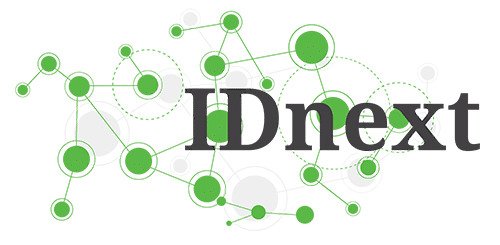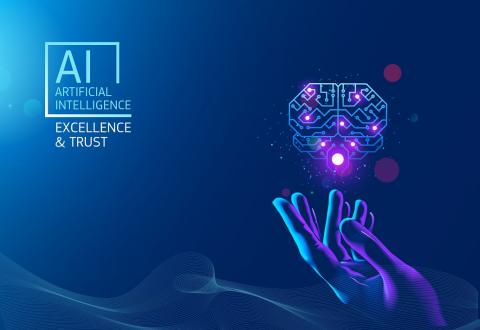In this article, the integration of Artificial Intelligence in the energy sector is examined. It is clear that AI can be leveraged in the energy sector to achieve energy sufficiency and also create unique solutions to problems in the sector. The AI-driven solutions considered in this article include intelligent power consumption, smart grids, fault prediction and prevention, electricity trading, and disaster recovery.
The fourth industrial revolution
The world is going through the fourth industrial revolution (4IR), a period characterized by the emergence of disruptive technologies constantly eliminating physical, digital, and biological frontiers. These smart technologies are revolutionizing every sector and industry, and pushing the boundaries of what we have previously considered impossible. The world is changing and technology is at the wheel. One of the main drivers of the fourth industrial revolution is Artificial Intelligence (AI), which refers to programming smart and intelligent machines that leverage real time data to perform tasks and solve problems, with limited human intervention. Advancements in AI are revolutionizing traditional approaches in every sector, and the energy sector is changing quickly.
AI-driven solutions in the energy sector
It is undeniable that the energy sector in particular has been immensely impacted by AI. Companies are beginning to integrate AI applications into the energy sector to achieve better energy efficiency and also create unique solutions to problems in the sector. Governments of countries have begun to invest in the possibilities of integrating AI into their energy industries. The Dutch Government for example has developed the Knowledge and Innovation Covenant (KIC) to invest in Dutch companies, focusing on key enabling technologies such as energy transition through AI application. In particular, The Hague, Netherland’s administrative capital is fast evolving into an internationally leading centre of “new energy” activities, with AI clearly at the core of this mission.
Prominent AI driven solutions in the Energy Sector include:
1. Intelligent Power Consumption
Energy conservation or intelligent power consumption is considered one of the most relevant applications of AI in the energy sector. Through AI, intelligent energy consumption is achievable and projects are developed with positive climate impact. The need to conserve energy and prevent wastage is a major concern in many countries including the Netherlands. With AI, networked devices in smart homes can read and react to the electricity market and also implement energy usage patterns in the home, leading to energy optimization and reduced costs.
Smart devices such as Google Home, Google Nest, and Amazon Alexa allow homeowners to interact with their thermostats and other home appliances in a bid to monitor energy consumption. These AI powered devices can take intelligent decisions to conserve energy such as turning off certain appliances when power is expensive.
2. Smart or Intelligent Grid
Another AI-driven solution in the energy sector is the smart grid. The central idea behind the smart grid is to replace manual operations with AI resulting in high efficiency, reliability, and low costs. The smart grid system is a combination of several intelligent mechanisms such as information management, communication technologies, digital sensing, control technologies, and field devices that combine to coordinate electric processes. Smart grids oversee every stage of the energy chain, from generation to consumption, and can intelligently predict, detect, analyse, and correct issues at every stage.
With the move towards renewable energy, the role of the smart grid has become crucial. Given the multiple sources of renewable energy such as wind, solar, Geothermal Energy (especially in USA), biomass, and hydropower, there is a need for an intelligent system to integrate all of these energy sources together. In a bid to leverage this solution, the Dutch Government has commenced the Intelligent Grids Innovation Programme, in addition to funding close to a hundred pilot projects of Dutch companies, targeted at improving grid technology and smart metering in the Netherlands.
3. Fault Prediction and Prevention
Energy is highly volatile and where not properly managed, can be extremely dangerous. Lives and property have been lost due to energy mishaps all over the world. For example, about 32 people died when an ill maintained coal-fired power plant exploded in India in 2017. Such fire outbreaks are not uncommon in the energy industry. In 2018, it was also found that faulty transmission lines caused massive wildfires in California. Equipment failure is a truly negative characteristic of many energy sectors around the world.
Fault prediction is one of the most useful applications of AI in the sector, coupled with real-time maintenance and bespoke maintenance schedules. With artificial intelligence, equipment can be monitored with faults and systems failures detected before they degenerate into disasters, thereby saving lives, property, valuable resources, and time.
4. Electricity Trading
Electricity is a commodity, and like most commodities, it is capable of being sold, bought, and traded in open markets. The electricity market, also known as the power exchange, requires huge amounts of data sourced from weather forecasting, grid demand, supply balance, and other related data sources to function effectively.
Artificial Intelligence can be leveraged in different aspects of electricity trading. For one, AI can help improve forecasts to become more accurate with the use of machine learning and neural networks. AI can also be used to process and analyse enormous amounts of data involved in power trading, producing results in real time. Additionally, with the integration of different renewable energy sources, AI increases the availability of power for trade on the electricity market.
5. Disaster Recovery
Natural disasters such as hurricanes, tsunamis, earthquakes, floods, wildfires, among others, often have catastrophic consequences on power. When these natural disasters occur, damage to utilities such as power and gas lines can be severe, often resulting in power outages that last days, weeks, or even months depending on the severity of the damage.
AI can be used to speed up the recovery time and consequently, restore power. AI technology can assess the entire system, predict the accessibility of power, and also deliver to areas where it is most needed without compromising the entire system. Simply, AI systems can assess damages, optimize the decision-making process, and offer reliable solutions to restore power once the disaster has subsided.
Conclusion
The Netherlands is taking a leading role in the energy sector as well as in AI solutions, and the potential for society, the economy, and the environment are incredible. Organizations such as the Dutch Marine Energy Centre (DMEC) based in The Hague are leading the transformation of the energy sector. And more businesses are helping bring AI-powered solutions to the energy sector, including Samotics who build predictive systems to combat energy waste. The future is here. The application of AI-powered solutions is changing the face of the energy sector and introducing endless possibilities.
Source: The Hague Business agency







